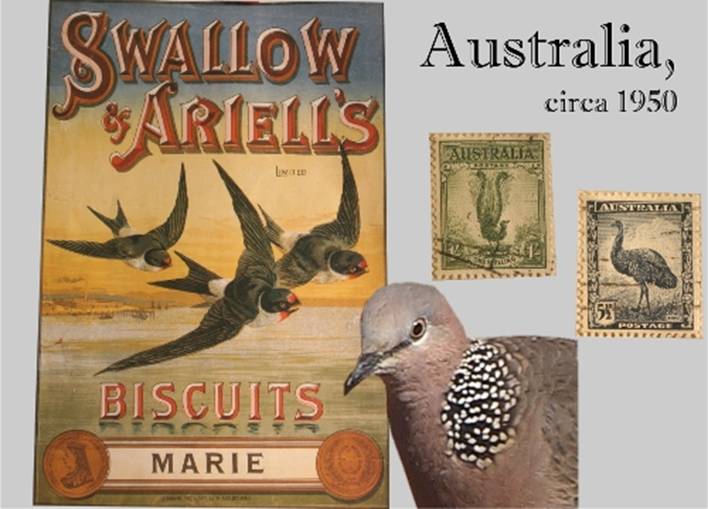A good question, Rod. When it was
last aired, a certain subjectivity coloured the positions taken, and I admitted
to a certain affection for it as one of the birds of my childhood, along with
the rare White-rumped Swallow, now, sadly, no longer seen.

The species got a run when a later edition
of Cayley illustrated ‘introduced birds’. Cayley said ‘in
general they are harmless birds, though in some areas they are a nuisance to
vegetable growers and compete with fowls for food in suburban yards’.
The first BA Atlas, which covered the 4
years 1977-1981, showed a mainly coastal distribution, strongest around cities
and areas of intense agriculture. The text commented: “It
eats the small seeds of weeds as well as bread and other food provided by
people. … The absence of suitable food probably limits
expansion … away from urban areas. …. [T]he bird is still far
from common even in farmland close to its points of introduction.”
The maps in the second atlas, which cover
the period 1998-2002, do show a marked spatial expansion, mainly into inland
areas. Virtually all of Victoria
is covered, and at least a third of NSW. I would surmise that the new appearances
are mainly in towns or areas where grain or other food is readily available
Like the Common Mynah, this introductee is probably a bird not likely to
seen out of sight of human habitation. [The BAA tables show an
increase in ‘recording rate’ from 0.018 to 0.050, which is said to
be an increase of 188% over the intervening 17 years, but the mathematics of
this defeat me.]
The second atlas even has a dot at Alice Springs. I think I reported about a year ago
having seen it in the botanic gardens there, where it was feeding on bare
ground on the seeds of native plants. It seems to have made a jump, but whether
this is a jump to being capable of surviving entirely in native veg, or at
least widespread weed veg, is another matter. Probably it is just a jump
from large towns to small towns, commensurately with its breeding success.
I suppose there is little that can be
done, but one course would be to deny it ready access to artificial feeders, at
least to the extent of not putting food out. However, people are not
going to stop doing this, and I’m afraid that what is sauce for the WHP
is going to be sauce for the STD.
From: Rod's Gardening
[
Sent: Wednesday, August 23, 2006
11:42 PM
To: Philip Veerman;
Subject: Re: [canberrabirds]
acronyms enough already.
However it seems my question about the Durras STD's (that's
Spotted Turtle Doves) may have been overlooked in all the kafuffle - or was it
a question not worth asking?
"A recent addition to the MFF has been up to 8 Spotted Turtle
Doves which seem to be increasing in
numbers in recent months and may be establishing a foothold here. Is this
of concern, i.e. will they displace native birds in this pristine region
(e.g.the White headed Pigeons)?"
About 12 months ago the COG line ran hot with discussion about the
effects of these "exotic introduced pests" - in Canberra admittedly, but since the South Coast
is part of our extended backyard this seems a valid question. Does anyone
know? or care? Answer too obvious? Should I be out there with a
silencer on my .303 (that's Three Oh Three rifle) knocking the little bludgers
off? Maybe I should have my sights set on the WHPs (White Headed Pigeons)
since they spread camphor laurel further up the country (just kidding).
I guess its one thing to have them established in the big
cities but in this bushland? Maybe the powers that be are aware of
their presence at Durras, but, to me, the sudden appearance of 8 in one sitting
appears of concern given their reputation.

